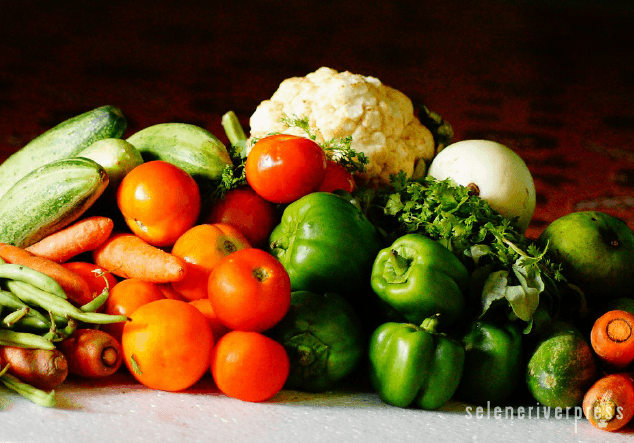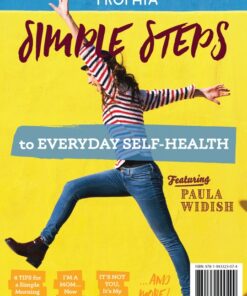I just love good news. Don’t you? Give me the option of good news or bad news first, and I’m jumpin’ all over that good news. Nine hundred and ninety-nine times out of a thousand, I’m the gal who thinks everyone has the best of intentions. I look for the silver linings, and I firmly believe that even the smallest efforts can have a big impact for the better. In my opinion, if you don’t cry watching videos of dogs being reunited with their soldier owners, you should probably keep it to yourself. Yes, folks, from this point forward, I shall be known as the “Good News Gal.” Oooh, I hope that nickname catches on. That would be sweet!
What I want to know is this: why do I have to go digging for the good news? Why isn’t it the first thing I see when I pull up the Internet or turn on my local news? I know, I know: “If it bleeds, it leads.” Bad stuff is happening all over the world, and we need to be aware. But since I am the Good News Gal, I’d just like to suggest that the TV broadcasters start the news off with some of the feel good stuff. Oh, and sprinkle more of it throughout their designated time slot. Good people are out there doing good things, and I think we all need to hear about them.
I have a great example of this from my “getting informed” efforts of a couple days ago. Did you know about an initiative called the Fruits and Vegetables Prescription Program, or FVRx? Clever acronym, eh? Rx like a prescription—clever indeed. I had no idea this program existed, yet the people at FVRx have been doing good work since 2010. That’s right. They’ve been going strong for five years, and I didn’t hear about their efforts until I stumbled across them online. Humph!
But I’m letting my “humph” get ahead of itself. Here’s why I got so excited about FVRx, and I have a sneaking suspicion that you will too:
- FVRx works to create a mutually beneficial community between local farmers, healthcare providers, and families dealing with diet-related illnesses.
- FVRx helps overweight or obese children and their families who register for the program through their healthcare provider. Each month, the family meets with their provider and a nutritionist to discuss current circumstances and set healthy goals. Now, the focus of the program is not to educate the masses but rather to assist low-income families who may be more concerned with cost than long-term health.
- During the monthly visit, the family receives a written prescription. But the next stop isn’t the local drug store. Instead, this prescription has a dollar value (based on the number of people in the family), and it’s valid only for fresh fruits and vegetables from their local farmers’ markets or other participating retailers. Brilliant, right?!
- FVRx strives to educate the whole family about the power nutrition has on their health. And since the program lasts four to six months, there’s a great chance that the habits the family develops during that time will stick. After all, experts say it only takes 21 days for a good habit to become engrained in our routine.
If that isn’t enough good news for one day, Wholesome Wave—the same organization that started FVRx—offers other great community-based initiatives as well. Wholesome Wave is independent rather than government-run, but they work with federal agencies to encourage policies that advance the Wholesome Wave mission and make sure that families who sign up for food-related government programs get the most out of them.
For example, the Double Value Coupon Program increases the value of federal SNAP benefits (Supplemental Nutrition Assistance Program, or food stamps) at farmers’ markets or other nonprofit community food hubs. When low-income recipients use their electronic SNAP card at local farmers’ markets on fresh fruits and vegetables grown right in the community, these benefits double in value. In other words, low-income families can buy twice as much fresh produce. Who doesn’t think this is a fantastic idea? That’s a rhetorical question—I don’t really want to know if you think it’s a bad idea. Remember, I’m the Good News Gal. ;)
Wholesome Wave is making a genuine difference in the lives of many low-income families and contributing great things to their self-health education. Hip hip hooray for them!
You can find out if there are any programs in your area by clicking on the map at the bottom of the “Our Initiatives” page at the Wholesome Wave website. Just select your state to see a list of active programs. Nothing in your area? You can encourage your health-care provider, local nutritionist, or farmers’ market to initiate a partnership with FVRx. It’s simple—all they have to do is fill out Wholesome Wave’s partnership inquiry form. If the Double Value Coupon Program is what interests you, your local farmers’ market or other nonprofit community food hub can connect using the same form.
Has all of this good news inspired you to take a fresh look at your own nutrition lifestyle? SRP offers all sorts of trustworthy and affordable resources for your self-health education:
- Healthy 4 Life: Dietary Guidelines from the Weston A. Price Foundation. This informative little book teaches you what to eat and even offers up some recipes.
- The Weston A. Price Foundation Shopping Guide. If you want to make sure you’re spending your food dollars wisely, you can’t do better than this handy reference guide.
But don’t stop there—you can explore new and exciting ways to prepare your family’s meals with the full range of real food cookbooks offered by Selene River Press. Choose the one that piques your interest…or try them all.
My work here is done. The Good News Gal has spread some good news. Don’t let it stop here. Trust me when I say that all of your peeps want some good news—so be sure to share this with all of them.



